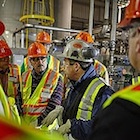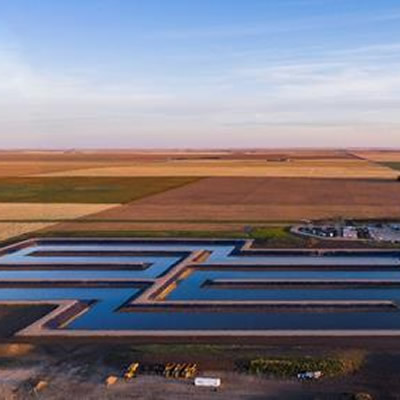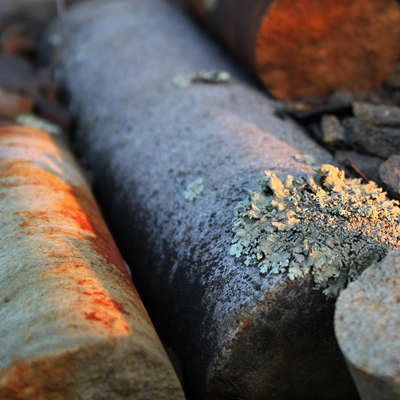Coal Association of Canada holds a successful conference in Vancouver

The official launch of the Boundary Dam carbon capture and storage facility in Estevan, Saskatchewan on October 2, 2014. — Photo courtesy of SaskPowe
The official launch of the Boundary Dam carbon capture and storage facility in Estevan, Saskatchewan on October 2, 2014. — Photo courtesy of SaskPower
The Coal Association of Canada (CAC) recently held its 2014 conference at the Westin Bayshore Hotel in Vancouver.
Each year, coal industry leaders from across Canada and around the world gather to talk about Canada’s coal industry.
“Most of the delegates were from Canada, but some were from other parts of the world, such as China, Japan, Australia and the U.S.,” said CAC spokeswoman Michelle Mondeville.
The three-day conference included presentations by coal producers Teck Resources, Westmoreland Coal Company and thermal coal developer Coalspur Mines Ltd.
Other speakers were Joe Aldina of New York-based Wood Mackenzie, who gave an overview of global and Canadian thermal and metallurgical coal markets, and Mike Monea, president of SaskPower's Carbon Capture and Storage Initiative, who discussed Saskatchewan's Boundary Dam carbon capture and storage (CSS) pilot project.
In October 2014, SaskPower launched the world’s first commercial-scale CCS process at a coal-fired power plant at Boundary Dam Power Station in Estevan, in southern Saskatchewan.
A number of provincial and federal government officials, including Saskatchewan premier Brad Wall, were on hand for the official opening.
"Over the past six years, Saskatchewan has become a global hub of innovation, especially in agriculture, mining, oil and gas, and now carbon capture and storage," said Wall in an announcement. "This project is another Saskatchewan first. The rest of the world is very interested to learn how they too can produce environmentally sustainable coal power."
When completely up to speed, the new process will capture up to one million tonnes of carbon dioxide every year. SaskPower said that is like taking 250,000 cars off the road.
The power unit equipped with CCS technology will continue to use coal to power approximately 100,000 Saskatchewan homes and businesses.
Monea said CCS is a process in which carbon dioxide is captured from large industrial plants—a coal-fired power plant in the case of SaskPower—and thus preventing the carbon dioxide from entering the atmosphere.
At Boundary Dam, after the coal has been burned to produce power, the resulting gases are shipped by pipeline to a capture facility instead of being vented into the atmosphere like at any other plant.
In the capture facility, the gases go through a liquid solution that strips out and separates the various gases. The carbon dioxide that is captured is compressed into a liquid form and carried out of the power station by pipeline.
Some of the gas is sent to an oilfield, where it is injected underground and used for enhanced oil recovery.
The rest of the gas is piped to SaskPower’s nearby Carbon Storage and Research Centre, where it is permanently stored 3.4 kilometres underground and monitored. The gas is stored in a sponge-like rock layer that is sealed by several solid rock layers.
The Boundary Dam CCS project also captures other gases that can have an impact on the environment, such as sulphur dioxide. This gas is then transformed into sulphuric acid, a tradeable commodity that can be sold on the market.
Monea said Canada is a world leader in the reduction of energy emissions.
“While governments in the United States and Europe are discussing targets, Canada is among the first in the world to make laws on emission reduction for coal-fired plants,” he said.
In 2011, the federal government announced performance standards for new coal-fired units and units that have reached the end of their useful lives. The standard will be enforced beginning in July 2015.
Monea said coal accounts for 47 per cent of all the fuel that is used in Saskatchewan.
“As SaskPower works on renovating and growing our aging power infrastructure, coal remains the most affordable power source for customers, and carbon capture and storage will make that coal sustainable for our environment,” he said.
CSS is a part of the billion-dollars-a-year investment that SaskPower is making to update the province’s power lines and stations.
Since the first carbon storage project took place in 1979, other projects have successfully stored carbon dioxide underground. They include Saskatchewan’s Weyburn-Midale project and SaskPower’s BD3 project.
Research and development continue to make CCS more efficient, with new breakthroughs leading to lower costs and better technology in the future, much like what has happened in the computer industry.
Why SaskPower says it is committed to carbon capture and storage
Carbon dioxide is a greenhouse gas that helps keep our planet at a livable temperature by keeping the sun’s heat in the atmosphere.
At very high levels, however, greenhouse gases can lead to climate change. The Industrial Revolution that began in the 1700s has meant a steady increase in the amount of carbon dioxide in the atmosphere. As world population increases and as developing countries industrialize and increase their standard of living, carbon dioxide emissions will continue to grow.
Reducing emissions is an important way to develop environmentally sustainable industry and power generation. SaskPower continues to develop renewable power options and encourages conservation as a way to reduce emissions.
Carbon dioxide is a greenhouse gas that helps keep our planet at a livable temperature by keeping the sun’s heat in the atmosphere.
At very high levels, however, greenhouse gases can lead to climate change. The Industrial Revolution that began in the 1700s has meant a steady increase in the amount of carbon dioxide in the atmosphere. As world population increases and as developing countries industrialize and increase their standard of living, carbon dioxide emissions will continue to grow.
Reducing emissions is an important way to develop environmentally sustainable industry and power generation. SaskPower continues to develop renewable power options and encourages conservation as a way to reduce emissions.




